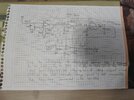Fluffyboii
Active Member
I put the whole thing in a box (the circuit in the last photo I sent). Made a switch for disabling the bias resistor, now I am using it with a dynamic mic and works amazingly well. Only problem is powering it up. Anything that is connected to wall introduces interference to the circuit so I am stuck with these 4 AAs for now. Can I power it up from USB power without those annoying frequencies invading the circuit. For amplification values more than 100 I heard a two op amp solution is better because of bandwidth issues. How much that would effect me if I wanted to get 200 times gain instead of 100 from the this circuit. I found this diagram but when I built it on breadboard it had very bad high frequency noise. audioguru
Attachments
Last edited:











